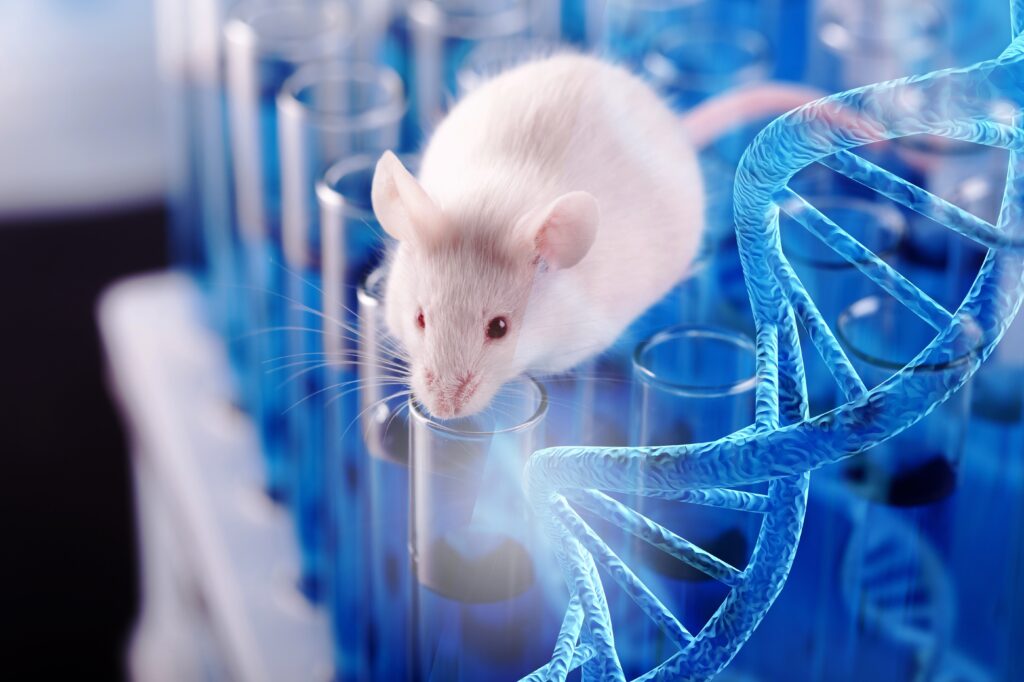
Amyotrophic lateral sclerosis (ALS) and frontotemporal dementia (FTD) are fatal and rapidly progress as neurodegenerative diseases. While inherited mutations can cause both conditions, they mostly appear sporadically in individuals without a known family history. Despite affecting different neurons, both diseases share a common hallmark: the pathogenic buildup of abnormal nuclear TAR-binding protein 43 (TDP-43) in the cytoplasm of affected motor neuron cells. Current theories propose that this cytoplasmic re-localization triggers toxic phosphorylation and fragmentation of TDP-43. Concurrently, a decrease of TDP-43 in the nucleus diminishes TDP-43-related physiological nuclear functions, contributing to the diseases’ progression (1).
Although this cytoplasmic accumulation of TDP-43 plays a significant role in the pathogenesis of ALS and FTD, the cellular mechanisms involved in the re-localization of TDP-43 to the cytoplasm is not known (2). A team of Australian neuroscientists led by Dr. Lars Ittner believe that they have found part of the answer for sporadic forms of the diseases. They identified novel interactions between pathogenic or dysfunctional forms of TDP-43 and the 14.3.3ɵ isoform of the cytoplasmic protein 14-3-3. By targeting this interaction with an AAV-based gene therapy vector, they were able to block and even partially reverse neurodegeneration in ALS/FTD mouse models.
14-3-3 proteins are cytoplasmic proteins that can change the stability, conformation, localization and function of proteins they interact with. They are ubiquitously expressed and are abundant in the brain where different isoforms govern different processes involved with the development and function of the central nervous system (3). Some 14-3-3 isoforms interact with TDP-43 under stress conditions and co-localize with TDP-43 in certain ALS spinal cord neurons. Researchers have previously reported an upregulation of mRNA for the 14.3.3ɵ isoform in ALS (4).
In Vitro Interaction Between Abnormal TDP-43 and 14.3.3ɵ
The researchers began by focusing on understanding the role 14.3.3ɵ might play in neo-cytoplasmic shuttling of TDP-43. Through co-transfection experiments with wild-type TDP-43 or dysfunctional/ pathogenic TDP-43 variants they found that 14.3.3ɵ interacted weakly with the wild-type but showed strong interaction with the pathogenic variants. In cells transfected with the abnormal TDP-43 variants they found notable co-localization in the cytoplasm of 14.3.3ɵ and TDP-43 (1). These results supported the theory that nuclear-cytoplasmic shuttling of pathogenic TDP-43 is regulated through non-canonical interactions between 14.3.3ɵ and TDP-43.
Increasing the level of 14.3.3ɵ expression, as is seen in sporadic ALS and FTD, resulted in a increase in the mis-localization of endogenous TDP-43. 14.3.3ɵ over expression also caused phosphorylation and fragmentation of TDP-43 like changes found in ALS and FTD. Finally, they found cells with 14.3.3ɵ overexpression showed abnormal mRNA splicing of the TDP-43 target Stathmin 2 (STMN2) similar to aberrant STMN2 splicing associated with TDP-43 pathology (1).
Targeting TDP-43:14.3.3ɵ Interactions Through Gene Therapy
Using the unique and significant interaction of 14.3.3ɵ with TDP-43 along with its preference for abnormal forms of TDP-43, the researchers developed an Adeno-associated virus (AAV) vector that targeted pathogenic TDP-43 accumulation. Recombinant AAV vectors are promising tools for gene therapy because they can efficiently deliver genetic materials into cells and maintain physiologically relevant expression levels in those cells and tissues. The vector developed by Ittner’s team contained the portion of 14.3.3ɵ that mediates TDP-43 binding fused to a protein degradation domain. Using this gene therapy vector, named DD-ɵFx, they successfully prevented functional deficits and reduced neuropathology in three ALS/FTD mouse models. In symptomatic mice, they found that treatment with the DD-ɵFx vector caused at lease partial reversal of functional deficits (1).
The novel TDP-43:14.3.3ɵ interaction identified by Dr. Ittner’s team offers a new research target for neuroscientists studying ALS and FTD. Even more encouraging is their results with the DD-ɵFx gene therapy vector in ALS/FTD mice. The therapy’s effectiveness in a several mouse models highlights the potential gene therapies offer for treating and even reversing disease progression of devastating diseases like ALS and FTD.
References
- Ke. Y., et al. (2024) Targeting 14-3-3 ɵ-mediated TDP-43 pathology in amyotrophic lateral sclerosis and frontotemporal dementia mice. Nueron 112, 1–16. Epub ahead of print.
- Ederle, H. and Dormann, D. (2017). TDP-43 and FUS en route from the nucleus to the cytoplasm. FEBS Lett. 591, 1489–507.
- Berg, D., Holzmann, C. and Riess, O. (2003). 14-3-3 proteins in the nervous system. Nat. Rev. Neurosci. 4, 752–62.
- Malaspina, A., Kaushik, N. and de Belleroche, J. (2000). A 14-3-3 mRNA is upregulated in amyotrophic lateral sclerosis spinal cord. J. Neurochem. 75, 2511–20.
Explore our portfolio of solutions and tools that can help accelerate gene therapy development.
